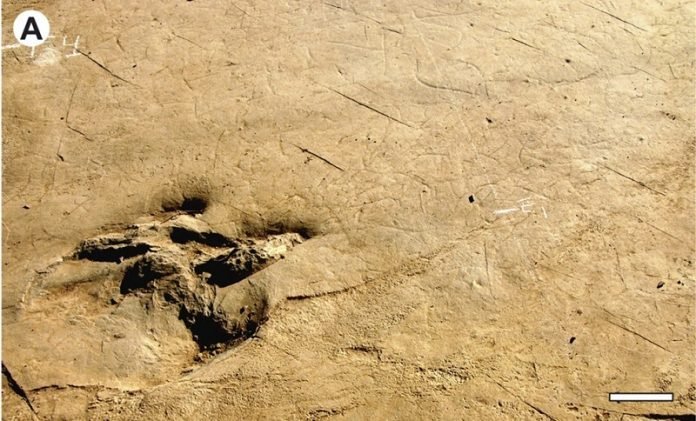
A set of dinosaur footprints in Spain has unusual features because the dinosaur that made the tracks had an injured foot.
The study was published in PLOS ONE by Carlos M. Herrera-Castillo of the Autonomous University of Madrid and colleagues.
Fossil trackways are an excellent source of information on the behavior of extinct animals.
In this study, researchers examine an abnormal trackway comprising six footprints from an unidentified theropod dinosaur preserved at the Las Hoyas Locality in Spain, dating to around 129 million years ago.
The authors used a variety of techniques to describe and model the tracks and to compare them to other trackways.
They observed that the tracks made by the right foot display all three toes, but that the innermost toe on the left foot is represented only by extremely short and irregularly shaped markings in the sediment, indicating an injury or deformity in that toe.
Furthermore, the footprints are spaced more widely than typical theropod tracks, indicating that this dinosaur adjusted its gait to compensate for its injured foot.
This is further supported by certain deformations in the right footprints which suggest the animal was putting more weight on that side.
The authors note that similar toe deformities and similar compensating behaviors are also seen in modern birds, and that fossil theropod feet are often found with injuries on the innermost toes.
Taken altogether, this evidence sheds light on how this dinosaur, and perhaps many others, found ways to survive despite pathological setbacks.
The authors add: “We studied one of the best theropod trackway with a foot deformity, printed in a microbial mat that grew in a 129 Ma pond, when hundreds of fish were swimming around.”
Source: PLOS.




